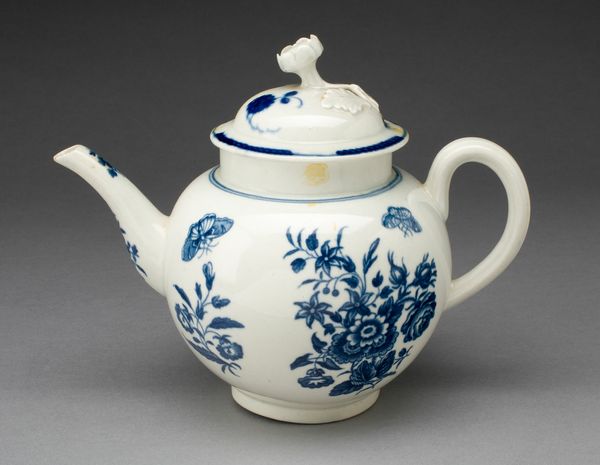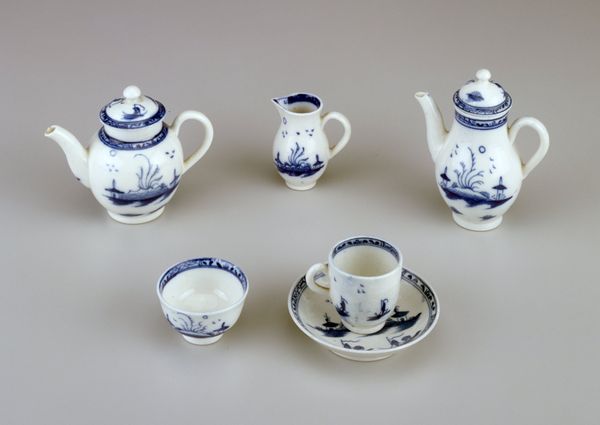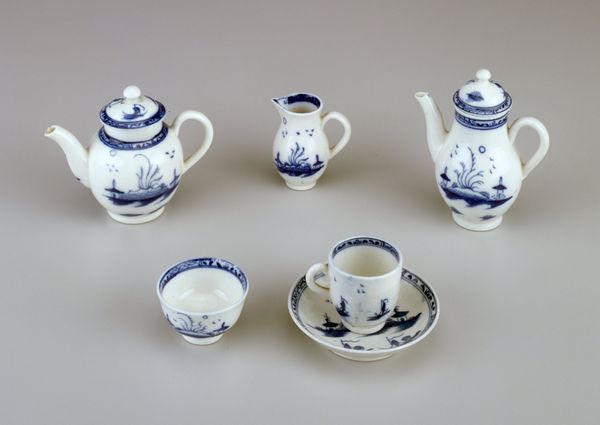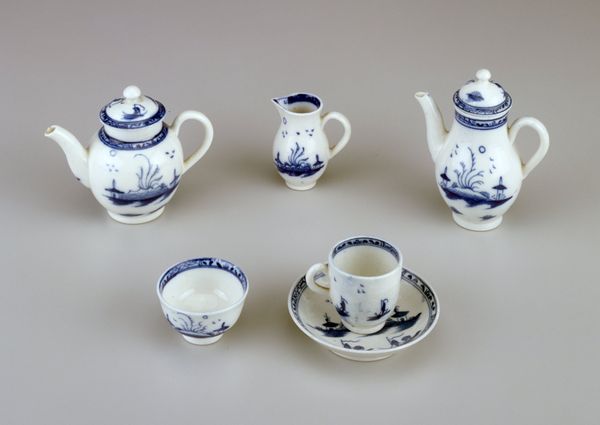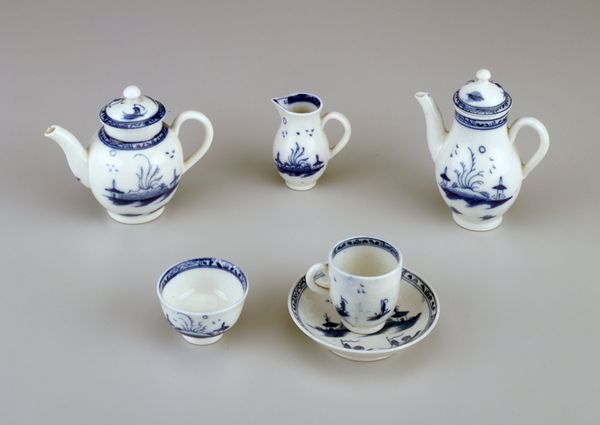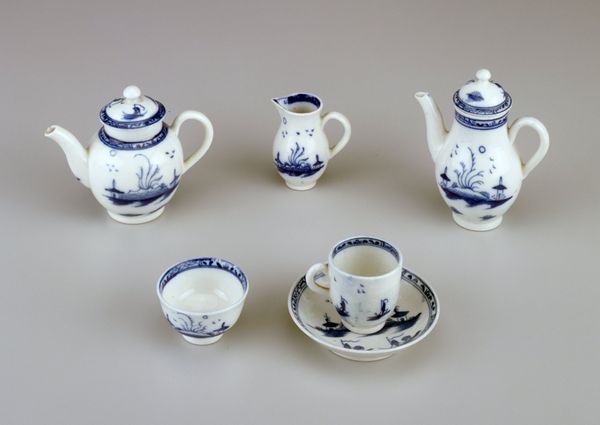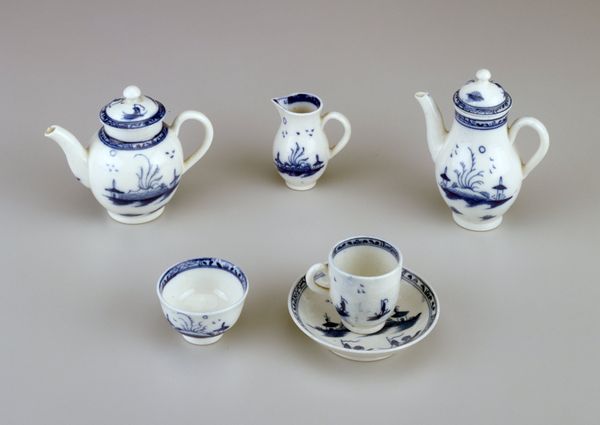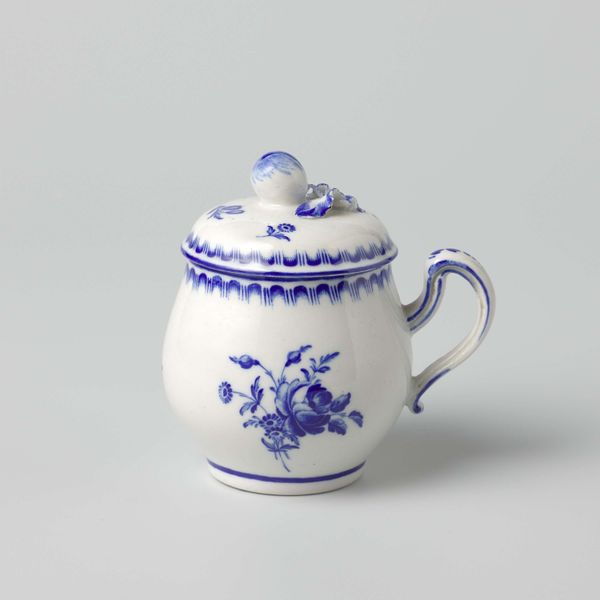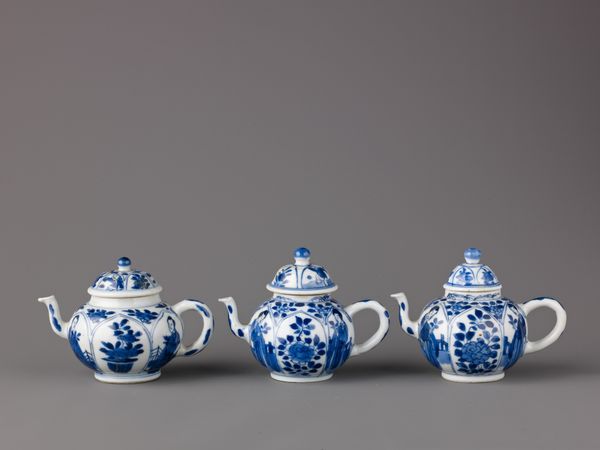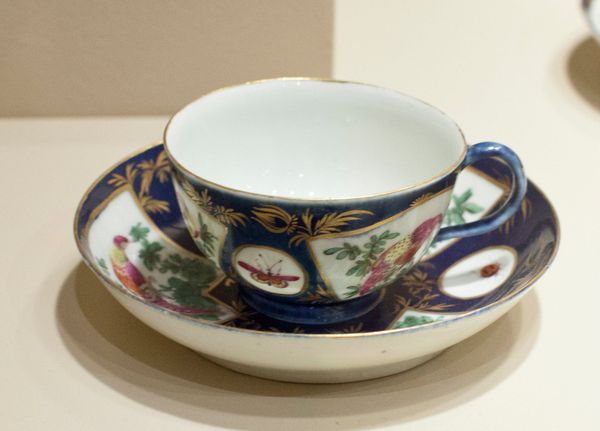
Covered tea pot 1765 - 1770
0:00
0:00
ceramic, porcelain
#
pottery
#
ceramic
#
porcelain
#
ceramic
#
decorative-art
Dimensions: 5 5/8 x 4 11/16 x 7 3/8 in. (14.3 x 11.9 x 18.7 cm)
Copyright: Public Domain
Editor: So, this is a "Covered Tea Pot" made sometime between 1765 and 1770 by the Worcester Porcelain Works. It’s ceramic and porcelain, and lives here at the Minneapolis Institute of Art. It has such a regal air, with the deep blue and those little birds. What stands out to you when you look at it? Curator: Well, first off, it whispers "tea party at a grand estate" to me! The deep cobalt blue – almost like a royal robe – paired with those whimsical birds, creates such a delightful tension. The birds feel almost plucked from a fairytale, don’t they? So alive amidst the rigid geometry. Do you think they were aiming for fantasy, or perhaps a gentle commentary on society at the time? Editor: I hadn’t thought about a commentary, that's intriguing. Maybe the birds represented a yearning for freedom amidst the structure of aristocratic life? Or just exotic lands and far-off things? Curator: Precisely! And look closer— see how the gold filigree seems to almost cage each painted vignette? It is stunning and subtle. Imagine pouring a cup of tea from this; It is like drinking from history! Doesn’t it also speak to the craftsmanship? Editor: It absolutely does! All those tiny details… it makes you think about the person who meticulously painted each bird, each leaf of that gold trim. It is remarkable. I’m really seeing so much more now, it is beautiful. Curator: That's the magic, isn’t it? Sometimes, a little curiosity opens a world of stories we never expected.
Comments
minneapolisinstituteofart almost 2 years ago
⋮
During the 1700s, Europeans were fascinated with travel accounts of exotic places that few would actually visit, like China, Japan, and India. In place of actual encounters, people surrounded themselves with products imported from Asia and the Middle East or influenced by Eastern designs. English ceramics factories like Worcester imitated Chinese ceramics and decorated its porcelain with Asian motifs, such as the landscapes and exotic birds seen here, in an effort to compete with a lucrative market.
Join the conversation
Join millions of artists and users on Artera today and experience the ultimate creative platform.

